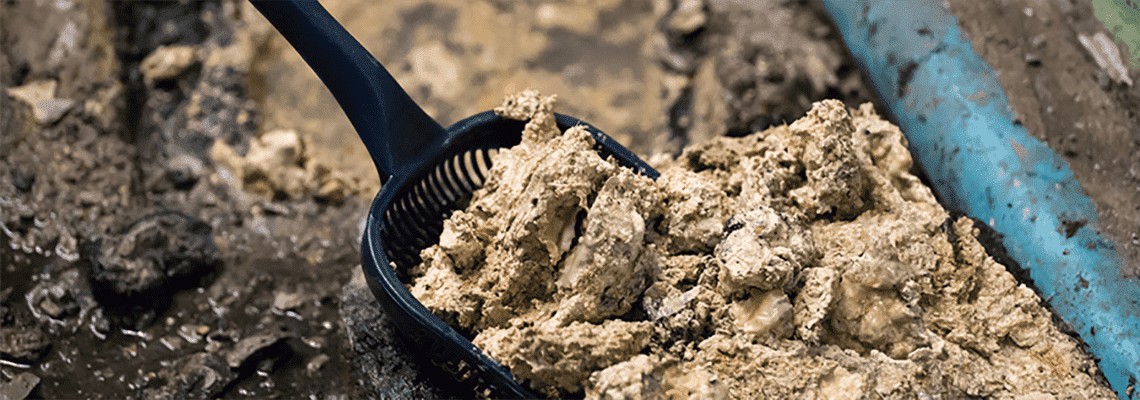Is Britain on the brink of a fatberg epidemic?
Now multiple discoveries across the country suggest fatbergs could become a common problem for UK water companies…
London water utility Thames Water made the headlines in late 2017 with the discovery of a monstrous, 250 metre long fatberg.
With a chunk now double cased (thankfully) and taking centre stage in the Museum of London, many thought that would be end of the problem.
Now multiple discoveries across the country suggest that fatbergs could become a more regular problem for UK water companies despite common warnings to customers not to flush fats, oils and grease (FOG) down drains.
What is a fatberg?
A fatberg is defined as “a large mass of fat and solid waste that collects in a sewer system”, the word fatberg was even announced as one of 533 new words to be added to the Merriam-Webster dictionary. Fatbergs are huge masses of solid waste that clog up sewage systems. They are made up of congealed fat, grease and oil, as well as wet wipes, sanitary towels and nappies that have been flushed down the toilet. Water utilities can spend millions every year clearing blockages as a result of homeowners and businesses pouring fats, oils and greases (FOG) unnecessarily down drains.
The Sidmouth monster
“It shows how this key environmental issue is not just facing the UK’s cities, but right here in our coastal towns. It is the largest discovered in our service history and will take our sewer team around eight weeks to dissect this monster in exceptionally challenging work conditions.”
-
Andrew Roantree
Director of wastewater and South West Water
After the festive period utility South West Water discovered a 64-metre fatberg in a sewer under the seaside resort of Sidmouth in Devon.
Longer than six double decker buses, the fatberg formed like a snowball – as wet-wipes get flushed down loos, fats oil and grease congeal together, gradually forming a hard mass.
South West Water said it spends an additional £4.5 million every year on clearing blocks from its 17,000km sewer network and discovered the fatberg during routine maintenance.
A video below filmed by a utility shows the scale of the challenge:
Andrew Roantree, director of wastewater and South West Water, said: “It shows how this key environmental issue is not just facing the UK’s cities, but right here in our coastal towns.
“It is the largest discovered in our service history and will take our sewer team around eight weeks to dissect this monster in exceptionally challenging work conditions.”
Work to clear the Sidmouth fatberg will start in early February and is expected to take eight weeks.
The Welsh whopper
Meanwhile, around the same time but in another part of the country, Welsh Water said it had discovered and removed 800 tons of fat from sewers beneath its capital city, Cardiff.
The fat was removed by the water utility as part of work on a £2 million investment project Victorian brick sewer in Mermaid Quay in Cardiff Bay.
According to the utility, the removed congealed mess of fats, oils, grease and wipes weighs the equivalent of 133 African bull elephants.
Steve Wilson, managing director of Welsh Water, said: “Work on the Mermaid Quay scheme is definitely proving to be a challenging one due to the large volume of fat, grease and oil which had built up in the sewer and caused a number of sewer collapses along Bute Street and Stuart Street. While we know this is a busy area, the sheer volume of this material we’ve taken out of the sewer shows the scale of the issues we are tackling.”
Bin it mantra
Wales and the south western England to one side, Thames Water, the utility servicing London has become known globally for its relationship with fatbergs.
In 2013 a “bus-sized lump” was discovered in Kingston upon Thames, at the time being labelled as “Britain’s biggest ever fatberg”.
Four years later and the Whitechapel fatberg – 10 times the size – was discovered. At the time CCTV camera inspections showed sewer to be totally blocked by the fatberg which was 3.5 metres deep below ground for 250 metres.
Despite repeating its ‘Bin it – don’t block it’ mantra, fatbergs continue to be a challenge for Thames Water, with estimates suggesting there are 10 large fatbergs in London right now, with hundreds of smaller ones across the country.
Fat traps and wipes
So why does the problem keep happening?
One of the challenges is the inheritance of a network of underground sewers built 150 years ago that are not designed for what’s flushed away today, including wipes.
Research carried out by Water UK showed that in many cases 93% of the material causing sewer blockages was made up of wipes. This included a high proportion of baby wipes, which are not designed to be flushed.
Furthermore, another finger of blame points to fats, oils and grease from restaurants and fast food chains and a lack of effort by site owners to invest and maintain devices to trap fat.
According to the BBC, research by Thames Water mapped the location of fatbergs and restaurants. The result showed that you’re chances of being flooded with sewage are eight times higher if you live within 50 metres of a fast-food restaurant.
Related content
Share your water technology stories with us
Do you have an innovation, research results or an other interesting topic you would like to share with the international water technology industry? The Aquatech website and social media channels are a great platform to showcase your stories!
Please contact our Sr Brand Marketing Manager Annelie Koomen.
Are you an Aquatech exhibitor?
Make sure you add your latest press releases to your Company Profile in the Exhibitor Portal for free exposure.
We promise never to send you spam and you can unsubscribe at any time!
